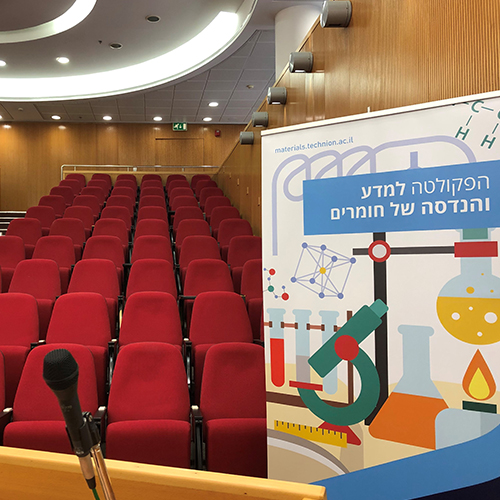
Mrs. Hadar Shaked - Ph.D. Candidate
09/01/2025
David Wang Auditorium, 3rd floor Dalia Meidan Bldg.
14:30
Crystals formed through biomineralization, the natural process by which organisms produce minerals, exhibit intricate morphologies, enhanced mechanical properties, and stabilization of thermodynamically unfavorable phases. These biominerals often develop from a metastable precursor phase, with amorphous calcium carbonate (ACC) as a notable example. Layered bio-composites often form during this amorphous-to-crystalline transformation, resulting in mismatched mechanical properties. Stabilization of ACC is facilitated by incorporating impurities such as Mg ions and organic molecules, which integrate into the crystalline lattice during crystallization.
In this study, we investigated structures formed during the transformation from amorphous to crystalline calcium carbonate, employing 3D printing to form Mg-stabilized ACC in layered configurations. We examined the incorporation of additives into biological systems and proposed their role in producing robust, multifunctional composites. The study further focused on stabilizing Mg-ACC and utilizing it to develop bioinspired 3D-printed architectures. We examined various crystallization pathways focusing on Mg incorporation and resulting crystalline morphologies. Controlled laser-induced heating was used to elucidate ACC crystallization mechanisms under varying conditions, introducing the “writing” crystallography concept for achieving precise phase transformations. This work bridges our knowledge of natural biomineralization processes with advanced manufacturing techniques, paving the way for innovative material design strategies.


